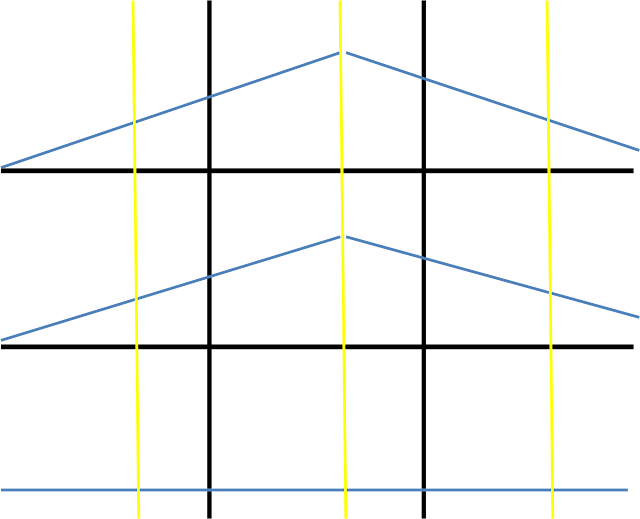How to Measure the Mastery of Famous Photographers Using the Rule of Thirds:
#photography #composition #ruleofthirds #famousphotographers #visualanalysis #goldenratio #aestheticbalanceRule of Third stands as a fundamental principle in photography, guiding countless aspiring
and seasoned professionals alike. But have you ever wondered how
iconic photographers leverage this technique to create mesmerizing
compositions? Buckle up, as we delve into the measurements of
renowned masters through the lens of the rule of thirds!
The Power of Three:
Imagine dividing your
frame into a 3x3 grid, creating nine equal sections. The rule of
thirds suggests placing key elements along the resulting gridlines or
intersection points for visually pleasing compositions. This
creates a natural tension and guides the viewer's eye through the image.

Kevin Carter's
photograph "The Starving Child and the vulture," also known as
"The Struggling Girl," taken in 1993 during the Sudan famine. It
captures a frail child, initially believed to be a girl (later identified as a
boy), and collapsed on the ground with a vulture looming nearby.

Applying the rule of
thirds to Kevin Carter's "The Starving Child and the Vulture" reveals
several significant compositional choices that contribute to the image's raw
power and raise ethical questions:
Subject placement:
- Child: Located
slightly right of the bottom left intersection, emphasizing
vulnerability and helplessness. The positioning places the viewer
directly above the child, creating an almost confrontational
perspective.
- Vulture: Occupies
the top right corner, perfectly aligned with the intersection
point. This creates a sense of impending doom and introduces an
element of threat into the frame.
- Background: Sparse
and blurry, drawing attention to the isolation and desolation of the
situation.
Leading lines:
- Child's arm: Creates a diagonal line leading back to the vulture, establishing a visual link between the two subjects and emphasizing the possible threat.
- Vulture's Look: Casts
a long diagonal line across the child's body, further emphasizing the
vulture's presence and the child's vulnerability.
Foreground and
background:
- Foreground (child): Sharp
and detailed, forcing viewers to confront the harsh reality of the
child's suffering.
- Background: Blurry
and indistinct, creating a sense of anonymity and representing the
wider scope of the famine's devastation.
- The image exhibits an unsettling
tension. The child's fragile form contrasts sharply with the
vulture's predatory presence. The blurred background adds to the
sense of unease and leaves the outcome uncertain.
- Despite the tension, the
composition maintains a certain balance. The vulture's placement on
the right counters the child's weight on the left, creating a visual
equilibrium that amplifies the emotional impact.
In a photographic scenario, a subject may appear either under attack or distressed by an object. The subject is positioned horizontally, while the object stands upright. If the subject is experiencing fear, the subject might direct its gaze downward, while the object maintains its focus on the subject.

In the image, three objects are positioned within three columns. The central axis of each object aligns with a line calculated using the Golden ratio. If we divide the width of each column by 2.6 and measure from the right side of the column, we will identify the yellow line.
If we connect the top points of each object, it will form a triangle with the top line of the rule of thirds grid.
If we connect the lower points of the left hand of each object, it will form a triangle with the bottom line of the rule of thirds grid.

Head space: If a Fibonacci spiral is drawn from the right eye of the character standing in the middle of the frame and being the tallest, the location where the spiral's tail concludes will determine the headspace.
The Terror of War: It is a Pulitzer Prize-winning image taken by
Associated Press photographer Nick Ut on June 8, 1972, during the Vietnam War.
The photo depicts nine-year-old Phan Thi Kim Phúc running naked down a road after a napalm attack on her village, Trảng Bàng. She is surrounded by other villagers and South Vietnamese soldiers, all fleeing the burning village. The image became an iconic symbol of the Vietnam War and the suffering it inflicted on innocent civilians.

In this photograph, one can observe that the characters in the foreground are positioned along a Fibonacci spiral.
Cropped Version: Composition Decoding
Through the lens of the
rule of thirds, the photograph "The Terror of War" holds several
interesting compositional elements:
Subject placement:
- Kim Phúc: Positioned
slightly off-center, close to the leftmost vertical intersection
point. This draws immediate focus to her vulnerable figure and the
urgency of the situation.
- Other villagers: Scattered
throughout the frame, emphasizing the widespread chaos and panic
caused by the attack. Some positioned on intersecting
points, adding visual tension.
- Smoke and flames: Occupy
the top right third, creating a sense of danger and destruction
looming over the fleeing figures.
Leading lines:
- Road: Guides
the viewer's eye directly towards Kim Phúc, highlighting her escape
and the direction of the attack.
- Bodies and arms: Many
figures reach out or run in the same direction, reinforcing the
urgency and collective movement away from the flames.
Foreground and
background:
- Foreground (Kim Phúc, soldiers): Detailed
and sharp, emphasizing their immediacy and the raw emotions on their
faces.
- Background (smoke, village): Blurry
and chaotic, representing the larger impact of the attack and the
devastation left behind.
Balance and tension:
- The placement of elements creates a
sense of dynamic tension. Kim Phúc's vulnerability contrasts with the
soldiers' urgency, while the flames add a menacing presence.
- Despite the chaos, the
composition feels balanced by the rule of thirds grid, suggesting an
underlying order amidst the tragedy.
Foreground characters are highlighted with red circles, representing their heads, while background characters are marked with blue circles in this composition blueprint. Utilize this guide for your photography, especially when capturing moments where people are moving forward.

Free Photography Classes: Fill up Contact Form














